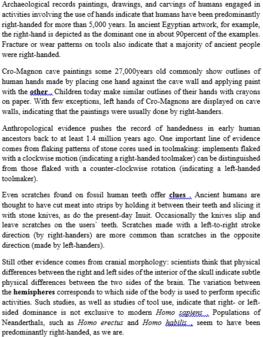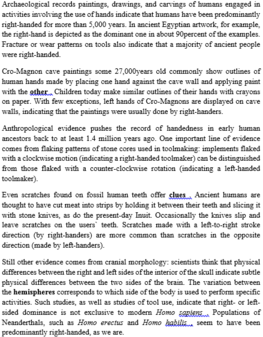Read the following passage and mark the letter A, B, C, or D on your answer sheet to indicate the correct answer to each of the questions from 36 to 42.
The history of clinic nutrition, or the study of the relationship between health and how the body takes in and utilizers food substances, can be divided into four distinct eras: the first began in the nineteenth century and extended into the early twentieth century when it was recognized for the first time that food contained constituents that were essential agents. Near the end of this era, research studies demonstrated that rapid weight loss was associated with nitrogen imbalance and could only be rectified by providing adequate protein associate with certain foods.
The second era was initiated in the early decades of the twentieth century and might be called "the vitamin period". Vitamins came to be recognized in foods, en deficiency syndromes were described. As vitamins became recognized as essential food constituents necessary for health, it became tempting to suggest that every disease and condition for which there had been no previous effective treatment might be responsive to vitamin therapy. At the point in time, medical schools started to become more interested in having their curricula integrate nutritional therapies in medicine. Reckless claims were made for effects of vitamins that went far beyond what could actually be achieved from the use of them.
In the third era of nutritional history in the early 1950's to mid-1960's, vitamin therapy began to fall into disrepute. Concomitant with this, nutrition education in medical schools also became less popular. It was just a decade before this that many drug companies had found their vitamins sales skyrocketing and were quick to supply practicing physicians with generous samples of vitamins and literature extolling the virtue of supplementation for a variety health-related conditions. Expectations as to the success of vitamins in disease control were exaggerated. As is known in retrospect, vitamin and mineral therapies are much less effective when applied to health-crisis conditions that when applied to long-term problems of nutrition that lead chronic health problem.
What does the passage mainly discuss?
A. The effects of vitamins in the human body
B. The history f food preferences from the 19th century to the present.
C. The stages of development of clinical nutrition as a field of study.
D. Nutritional practices of the 19th century.






Đáp án C
Đoạn 1 có đề cập "The history of clinical nutrition… can be divided into four distinct eras", và tiếp sau đó, tác giả trình bày về 3 thời kỳ (eras) đầu tiên.
Dịch: Lịch sử về các chất dinh dưỡng, hay sự nghiên cứu về mối quan hệ giữa sức khỏe và làm thế nào cơ thể có thể hấp thụ và sử dụng các chất trong thức ăn, có thể được chia làm 4 giai đoạn…"